
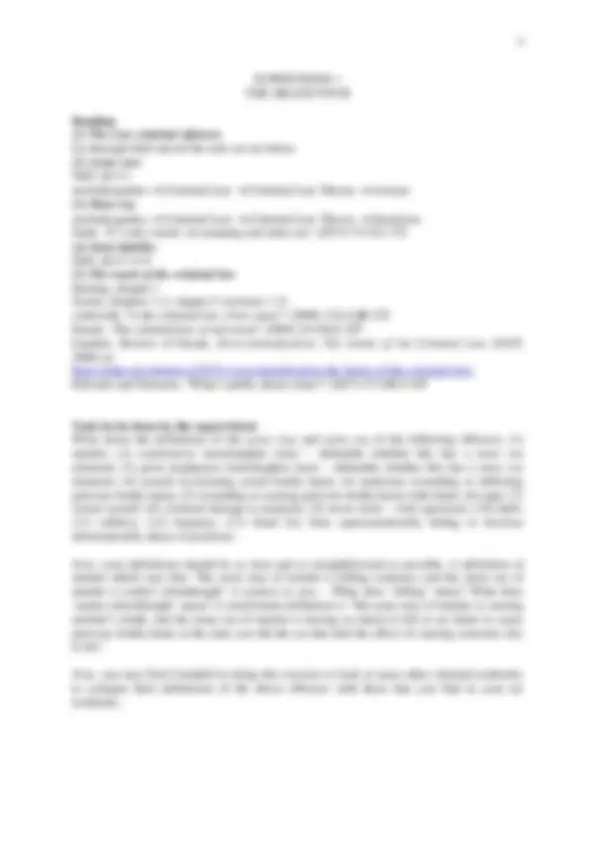
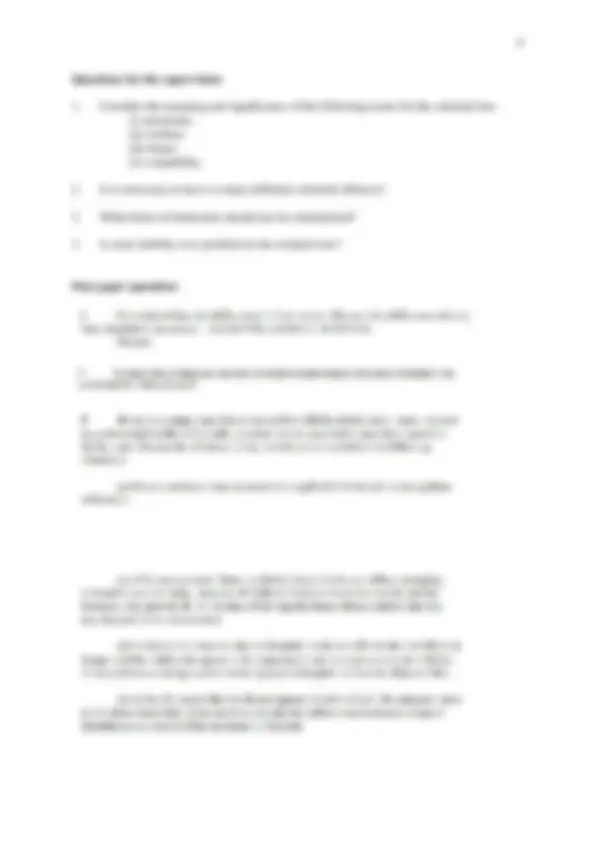
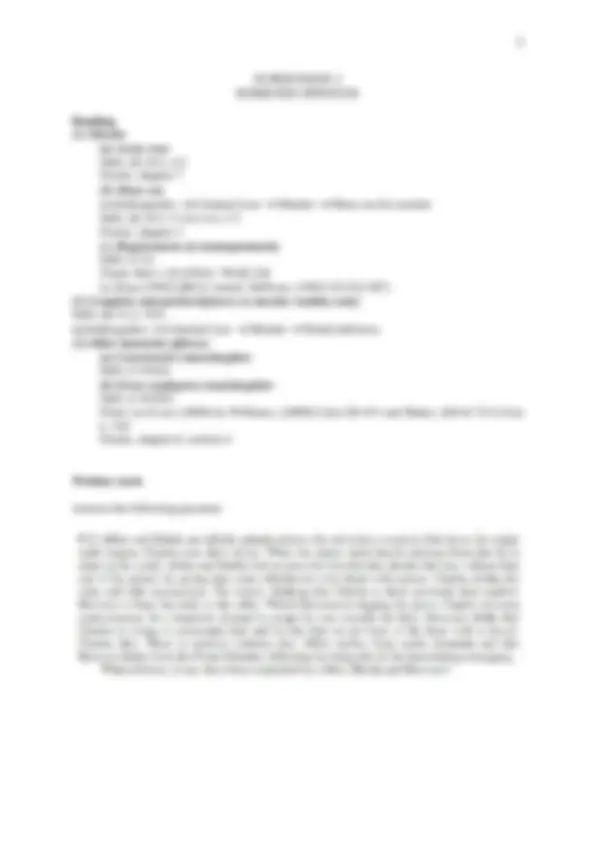
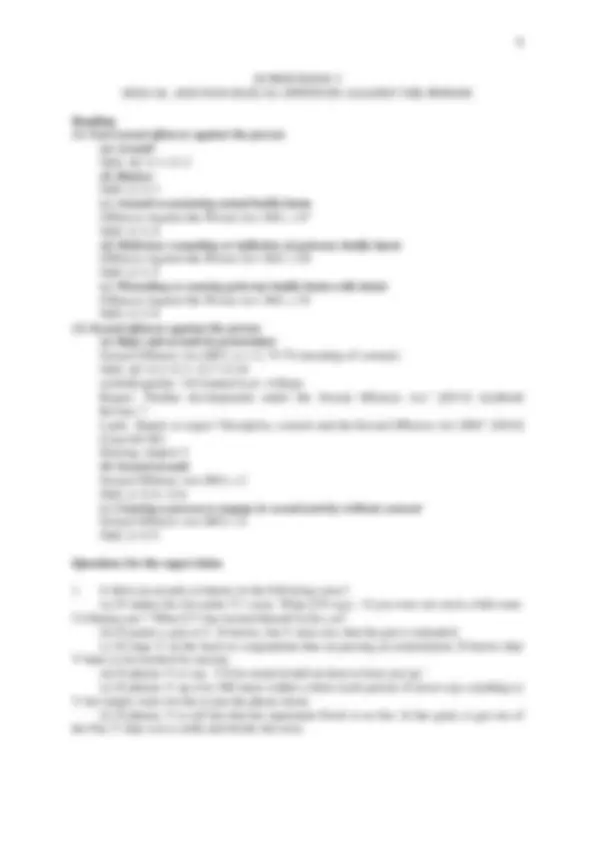
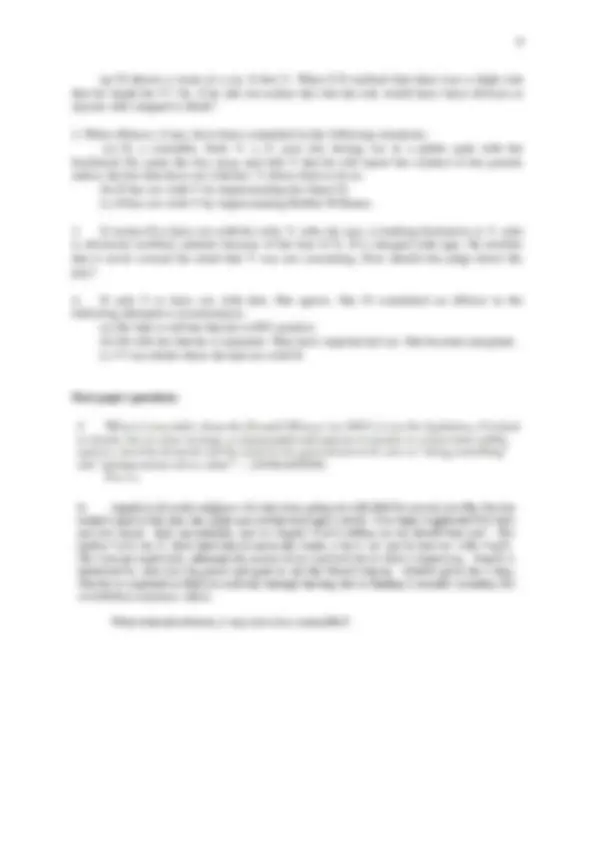

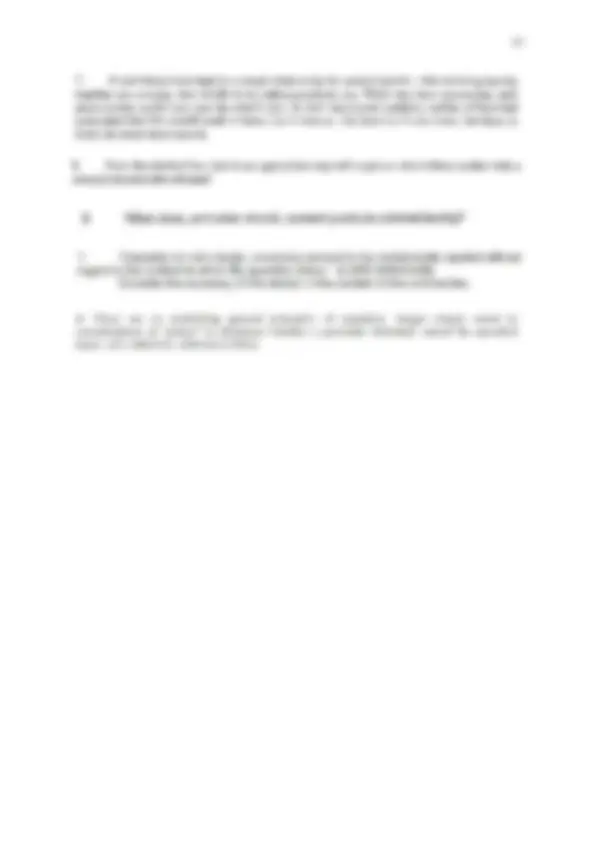
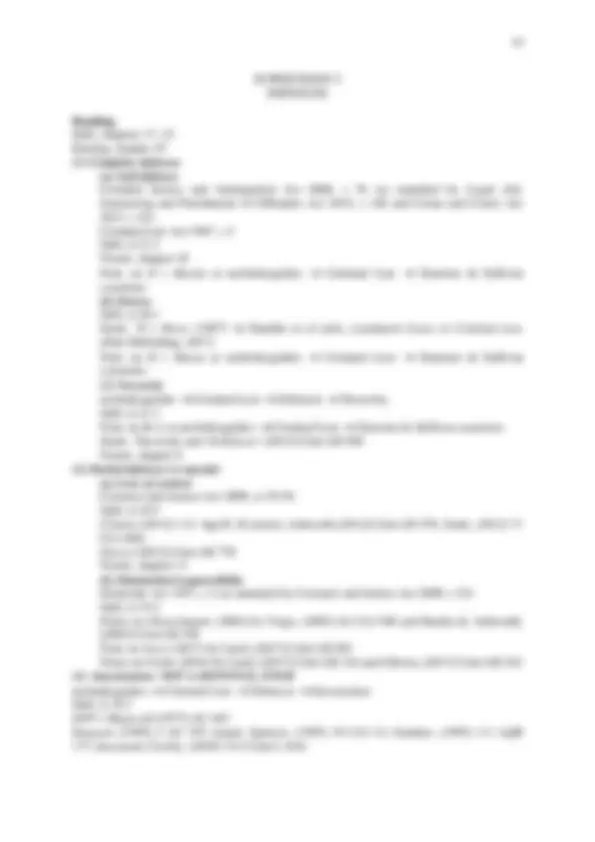
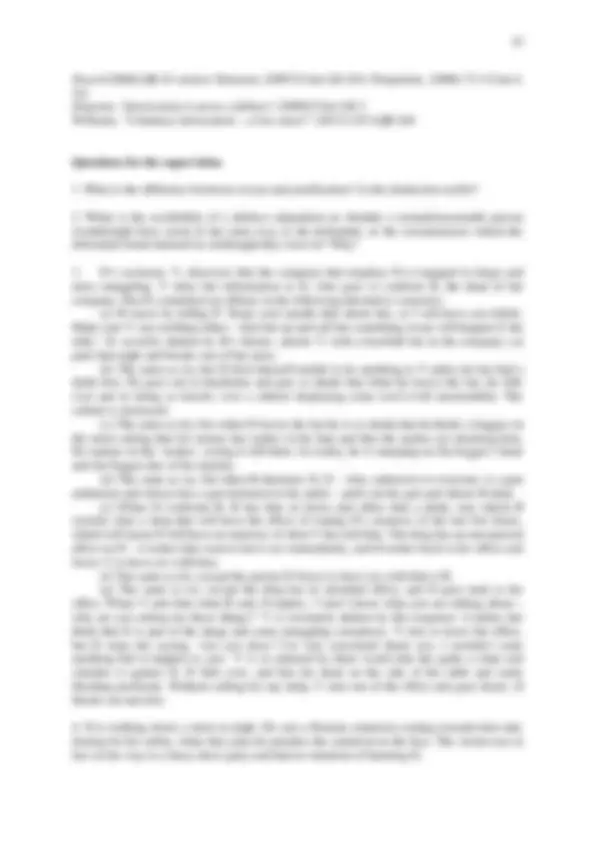
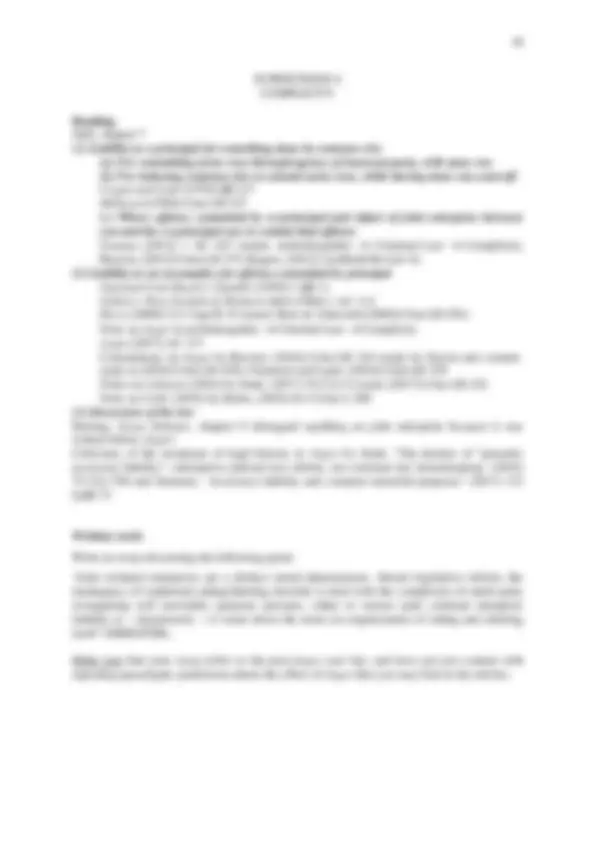
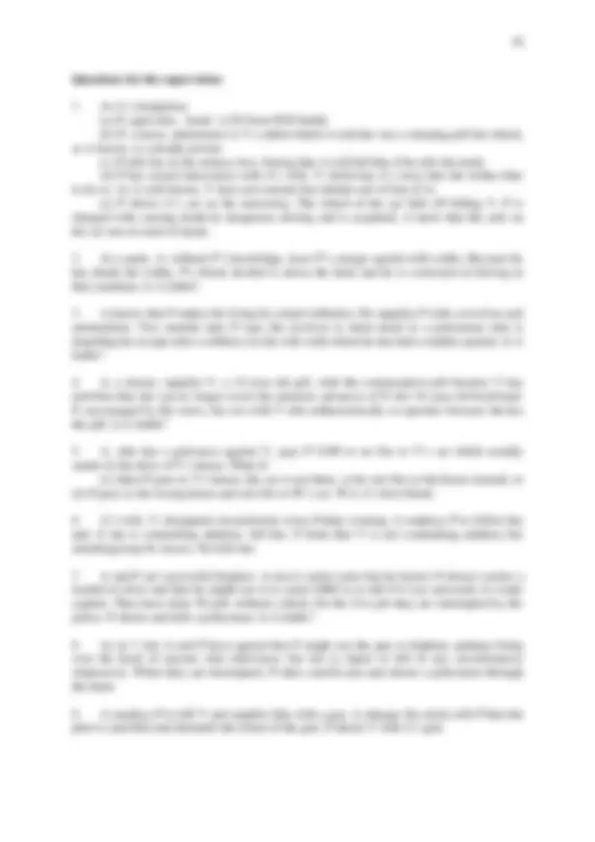
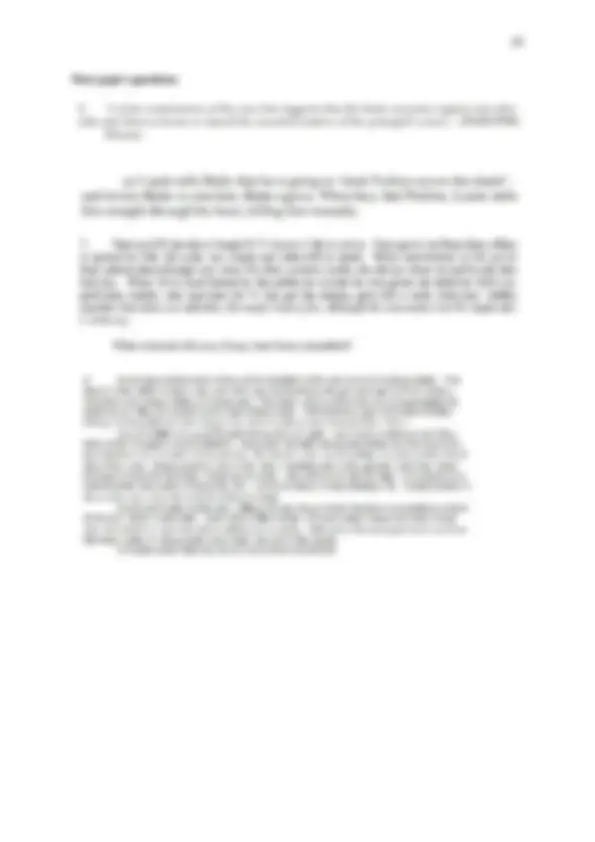
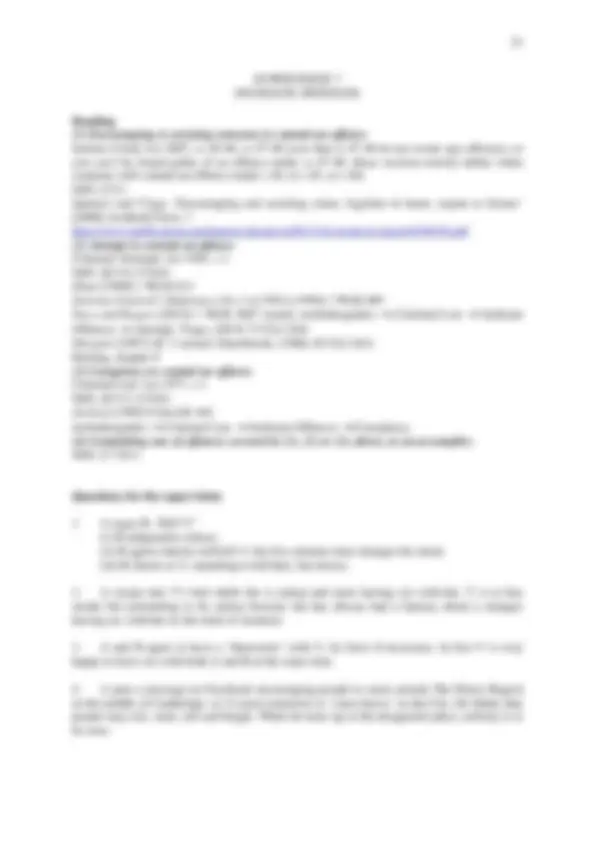
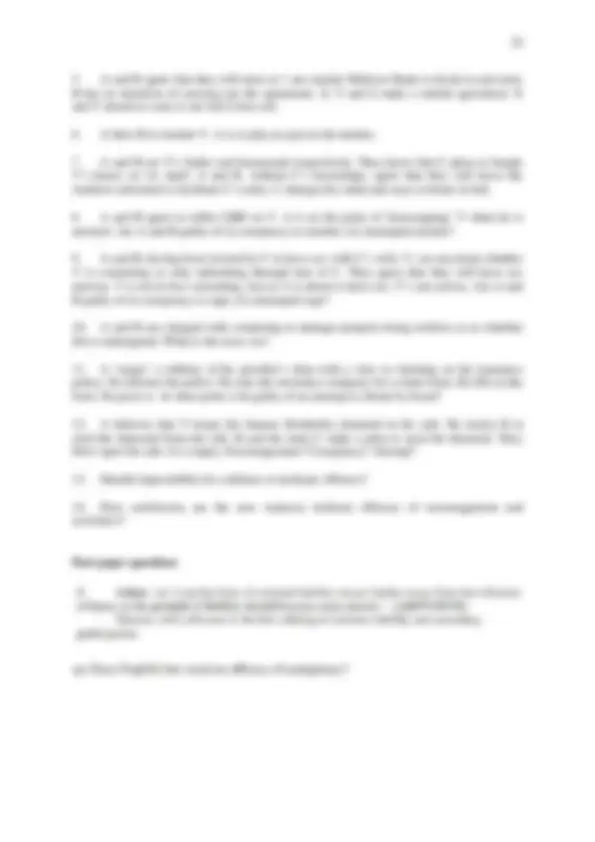
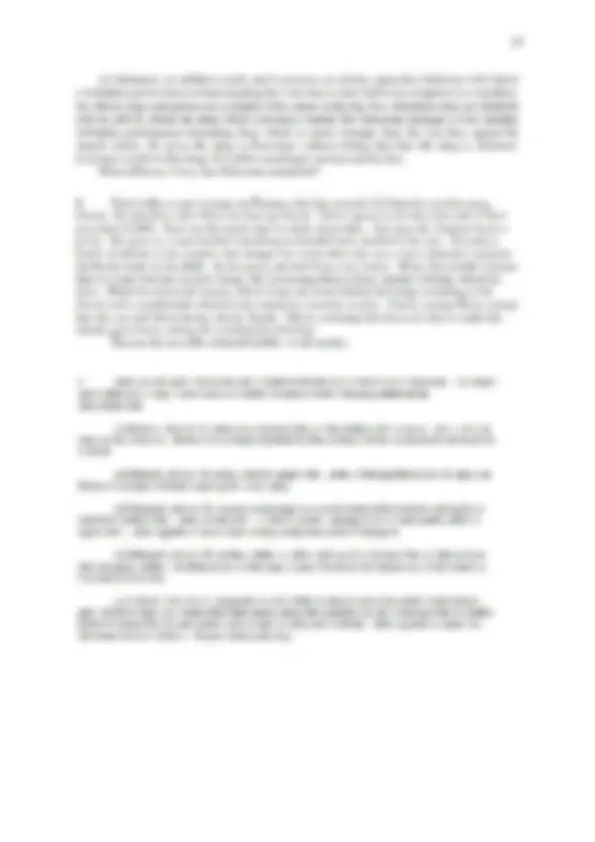
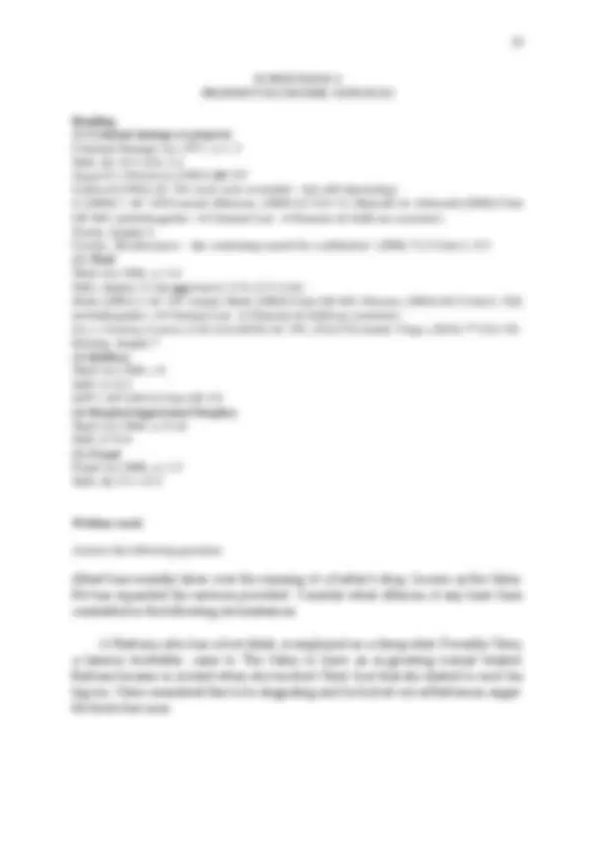
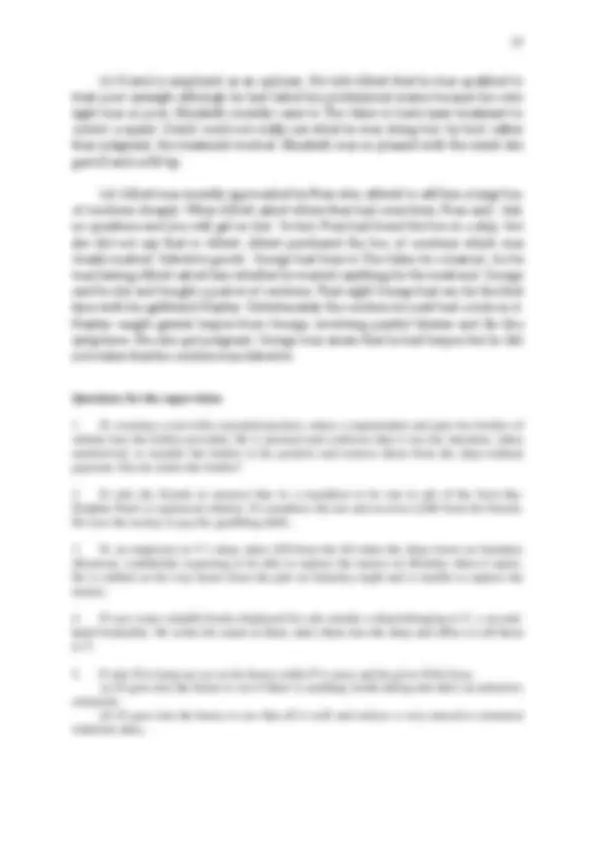
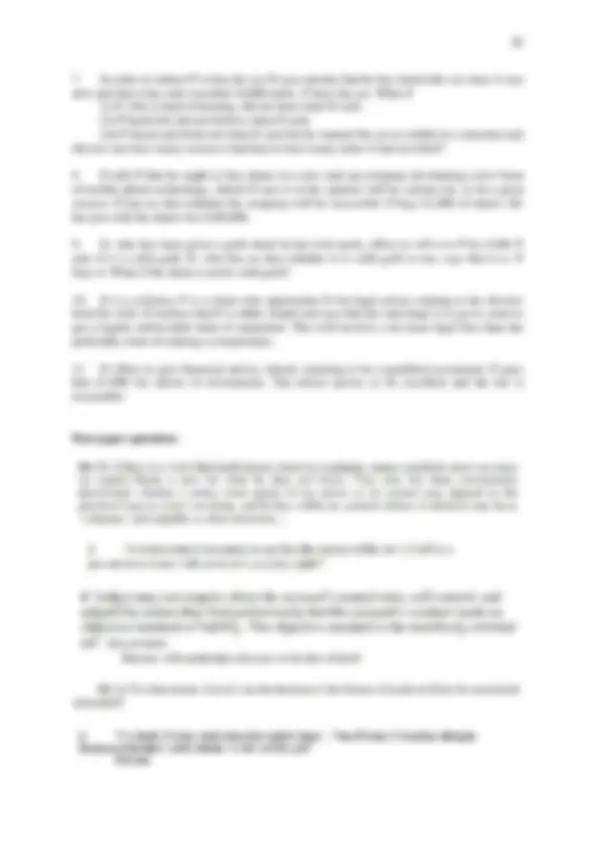
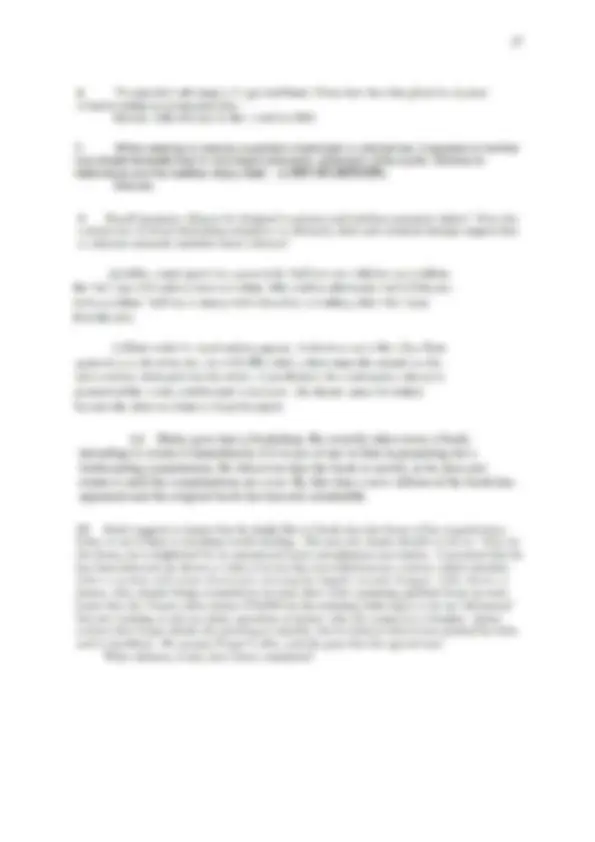
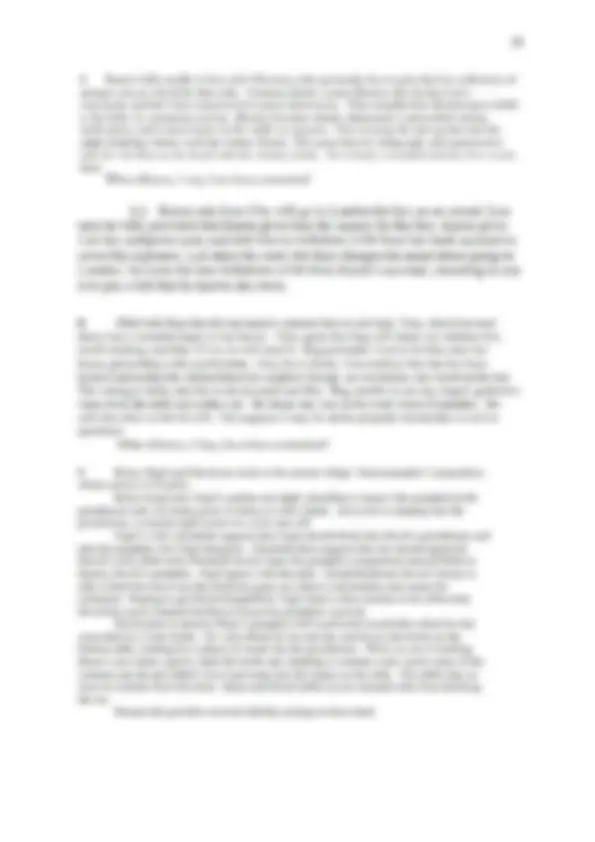




Study with the several resources on Docsity

Earn points by helping other students or get them with a premium plan


Prepare for your exams
Study with the several resources on Docsity

Earn points to download
Earn points by helping other students or get them with a premium plan
Community
Ask the community for help and clear up your study doubts
Discover the best universities in your country according to Docsity users
Free resources
Download our free guides on studying techniques, anxiety management strategies, and thesis advice from Docsity tutors
The reading lists for a Criminal Law course at the University of Cambridge, including weekly topics, books, essays, and past paper questions. The course covers various aspects of Criminal Law, including homicide offences, sexual and non-sexual offences against the person, issues in the criminal law, defences, complicity, inchoate offences, and property/economic offences. The reading lists include references to Simester and Sullivan’s Criminal Law: Theory and Doctrine, 7th ed, Herring’s Great Debates: Criminal Law, 3rd ed, and Norrie’s Crime, Reason and History, 3rd ed.
Typology: Summaries
1 / 30

This page cannot be seen from the preview
Don't miss anything!























Plan of reading lists (1) The grand tour (2) Homicide offences (3) Sexual and non-sexual offences against the person (4) Issues in the criminal law ( 5 ) Defences ( 6 ) Complicity (7) Inchoate offences ( 8 ) Property/economic offences Books We will be using Simester and Sullivan’s Criminal Law: Theory and Doctrine , 7 th ed (Hart, 201 9 ) (‘S&S’ on the reading lists) as our textbook, and you should buy that. But a textbook understanding of the criminal law will not be enough for you to do well in the exams, and so to get a critical understanding of the criminal law we will be consulting Herring, Great Debates: Criminal Law , 3rd ed (Palgrave Macmillan, 2015) (‘Herring’ on the reading lists) and Norrie, Crime, Reason and History , 3rd ed (CUP, 201 4 ) (‘Norrie’ on the reading lists). You should buy a copy of Herring (a second hand copy is fine), but should NOT buy a copy of Norrie. This is because (within the Cambridge system), you can access Norrie free of charge and online at https://www.cambridge.org/core/books/crime-reason-and- history/58E0E135465FCCDA979103F95E8884DB You should also buy the latest copy of Blackstone’s Statutes on Criminal Law (and bring it with you to the supervisions!!). Cases In theory, I could set you 40 cases per reading list to read: there are that many cases that you have to know about. But that would place a huge burden on you in terms of your workload. Instead, in preparing these reading lists, I’ve focussed on referring you to four or five cases that tend to have major significance for the areas of law you have been studying, and which tend to come up time and time again in exam questions. Make sure that you read these cases carefully, and any notes on those cases that I refer you to. As for the rest of the cases you’ll need to know for the exams, you can get those from your textbooks. A warning and some advice These reading lists look longer than they actually are because they are highly, highly structured, with lots of headings separating out the different parts of the area of the law that you will be looking at for a particular supervision. But these reading lists are long, and you shouldn’t necessarily hope to get through them all in one go. Use Simester & Sullivan as your main source of understanding of the law, but don’t get bogged down in lots of details that you won’t need to know about for the exam. The exam is split into two parts – essay questions, and problem questions – and you are supposed to do two questions from each. You will not be able to do the essay questions well unless you get into the theoretical issues surrounding the criminal law – and for that, you have to get beyond your textbook and into reading articles and other materials (referred to on your reading list). So don’t neglect that side of the reading. mcbridesguides I have written a number of essays for you to help you out with various aspects of your Criminal Law studies. These are available on my website www.mcbridesguides.com. I have concentrated on areas of the law that are not dealt with at all well in the textbooks. I will indicate on the reading lists as and when you will need to read one of these essays. When I do, MAKE SURE YOU READ IT before the supervision. It is far more important that you read these essays than anything else on the reading list. I
will be pretty displeased if I have to spend time in the supervision going over points that I have worked hard to set out clearly and at length in an essay for you. I want to use the supervisions to focus on going over past paper questions, and any queries that you still have AFTER you have read everything I have told you to read. Written work Every two supervisions, you will be expected to do some written work and hand it in, in the supervision. What written work will be specified on the reading list. Questions for the supervision Every supervision reading list comes with some ‘Question for the supervision’. The intention is that you will think about these questions as you prepare for the supervision, and be ready to run through them in the supervision. Thinking about these questions will also help you with your reading, in terms of guiding you to what are the kinds of issues you should be concentrating on in your reading. Past paper questions At the end of every supervision reading list, you will find some past paper questions relevant to the reading for that supervision. We may get on to considering some of these questions in the supervision, but they will also be useful practice for you in the holidays. Nick McBride njm33@cam.ac.uk
Questions for the supervision
Reading (1) Murder (a) Actus reus S&S, §§ 10.2, 4. Norrie, chapter 7 (b) Mens rea mcbridesguides Criminal Law Murder Mens rea for murder S&S, §§ 10.3, 5.1(i)-(vi), 5. Norrie, chapter 3 (c) Requirement of contemporaneity S&S, § 5. Thabo Meli v R [1954] 1 WLR 228 Le Brun [1992] QB 61 (noted, Sullivan, (1993) 52 CLJ 487) (2) Complete and partial defences to murder (outline only) S&S, §§ 21.2, 10. mcbridesguides Criminal Law Murder Partial defences (3) Other homicide offences (a) Constructive manslaughter S&S, § 10.6(i) (b) Gross negligence manslaughter S&S, § 10.6(ii) Notes on Evans (2009) by Williams, [2009] Crim LR 631 and Baker, (2010) 74 J Crim L 310 Norrie, chapter 6, section 4 Written work Answer the following question:
Past paper questions
Reading (1) Non-sexual offences against the person (a) Assault S&S, §§ 11.1-11. (b) Battery S&S, § 11. (c) Assault occasioning actual bodily harm Offences Against the Person Act 1861, s 47 S&S, § 11. (d) Malicious wounding or infliction of grievous bodily harm Offences Against the Person Act 1861, s 20 S&S, § 11. (e) Wounding or causing grievous bodily harm with intent Offences Against the Person Act 1861, s 18 S&S, § 11. (2) Sexual offences against the person (a) Rape and assault by penetration Sexual Offences Act 2003, ss 1-2, 74-76 (meaning of consent) S&S, §§ 12.2-12.3, 12.7-12. mcbridesguides Criminal Law Rape Rogers ‘Further developments under the Sexual Offences Act’ [2013] Archbold Review 7 Laird, ‘Rapist or rogue? Deception, consent and the Sexual Offences Act 2003’ [2014] Crim LR 492 Herring, chapter 5 (b) Sexual assault Sexual Offences Act 2003, s 3 S&S, § 12.4, 12. (c) Causing a person to engage in sexual activity without consent Sexual Offences Act 2003, s 4 S&S, § 12. Questions for the supervision
Reading (1) Constructive liability S&S, § 6. mcbridesguides Criminal Law Criminal Law Theory Consequences Horder, ‘A critique of the correspondence principle’ [1996] Crim LR 759 Mitchell, ‘In defence of the correspondence principle’ [1999] Crim LR 195 (reply by Horder at 206) Herring, chapters 2, 6 (2) The relevance of consent to a defendant’s guilt under the criminal law S&S, § 21. Herring, chapter 4 Brown [1994] 1 AC 212 (discussed, Murphy, [2011] Crim LR 758; Tolmie, [2012] Crim LR 656 ; Herring, ‘ R v Brown (1993)’ in Handler et al (eds), Landmark Cases in Criminal Law (Hart Publishing, 2017)) Dica [2004] QB 1257 (noted, Weait, (2005) 68 MLR 121) Cherkassky, ‘Being informed: the complexities of knowledge, deception and consent when transmitting HIV’ (2010) 74 J Crim L 242 BM [2019] QB 1 (noted, Clement, (2018) 77 CLJ 451; Williams, (2019) 135 LQR 17) (3) The treatment of causation under the criminal law S&S, § 4. Simester, ‘Causation in (criminal) law’ (2017) 133 LQR 416 Ibbetson, ‘ R v Jordan (1956)’ in Handler et al (eds), Landmark Cases in Criminal Law (Hart Publishing, 2017) Environment Agency v Empress Car Co [1999] 2 AC 22 Notes on Kennedy (2008) by Miles, (2008) 67 CLJ 17 and Ormerod, [2008] Crim LR 222 R v Hughes [2013] 1 WLR 2461 (noted, Simester and Sullivan, (2014) 73 CLJ 14; Ormerod, [2014] Crim LR 234) Simester and Sullivan, ‘Causing euthanasia’ (2019) 135 LQR 21 Written work Write an answer to one of the past paper questions provided for this supervision. Questions for the supervision
Reading S&S, chapters 17 , 22 Herring, chapter 10 (1) Complete defences (a) Self-defence Criminal Justice and Immigration Act 2008, s 76 (as amended by Legal Aid, Sentencing and Punishment of Offenders Act 2012, s 148 and Crime and Courts Act 2013, s 43) Criminal Law Act 1967, s 3 S&S, § 21. Norrie, chapter 10 Note on R v Martin at mcbridesguides Criminal Law Simester & Sullivan casenotes (b) Duress S&S, § 20. Stark, ‘ R v Howe (1987)’ in Handler et al (eds), Landmark Cases in Criminal Law (Hart Publishing, 2017) Note on R v Hasan at mcbridesguides Criminal Law Simester & Sullivan casenotes ( 3 ) Necessity mcbridesguides Criminal Law Defences Necessity S&S, § 21. Note on Re A at mcbridesguides Criminal Law Simester & Sullivan casenotes Stark, ‘Necessity and Nicklinson ’ [2013] Crim LR 949 Norrie, chapter 8 (2) Partial defences to murder (a) Loss of control Coroners and Justice Act 2009, ss 54- 56 S&S, § 10. Clinton [2012] 1 Cr App R 26 (noted, Ashworth [2012] Crim LR 539; Stark, (2012) 71 CLJ 260) Dawes [2013] Crim LR 770 Norrie, chapter 11 (b) Diminished responsibility Homicide Act 1957, s 2 (as amended by Coroners and Justice Act 2009, s 52) S&S, § 19. Notes on Dietschmann (2003) by Virgo, (2003) 62 CLJ 540 and Barsby & Ashworth, [2003] Crim LR 550 Note on Joyce (2017) by Laird, [2017] Crim LR 881 Notes on Golds (2016) by Laird, [2017] Crim LR 316 and Gibson, [2017] Crim LR 543 ( 3 ) Intoxication: NOT A DEFENCE, EVER mcbridesguides Criminal Law Defences Intoxication S&S, § 18. DPP v Majewski [1977] AC 443 Kingston [1995] 2 AC 355 (noted, Spencer, (1995) 54 CLJ 12; Gardner, (1995) 111 LQR 177; discussed, Crosby, (2010) 74 J Crim L 434)
Questions for the supervision
Past paper questions